Diamond Aircraft and Siemens have flown a jointly developed multi-engine hybrid electric aircraft.
The first flight took place on 31 October 2018 at Diamond Aircraft’s headquarters in Wiener Neustadt, Austria.
The aircraft is a modified Diamond DA40 with one diesel combustion engine powering two independent electric drive systems consisting of one motor, battery and inverter each.
Two electric motors are mounted on a forward canard, which combined can generate 150kW of take-off power.
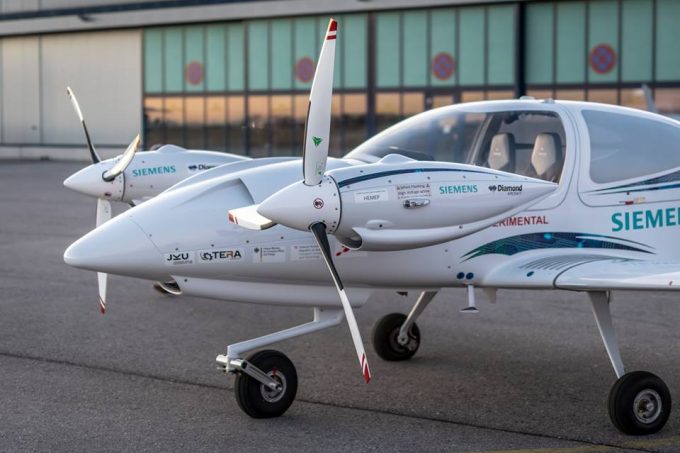
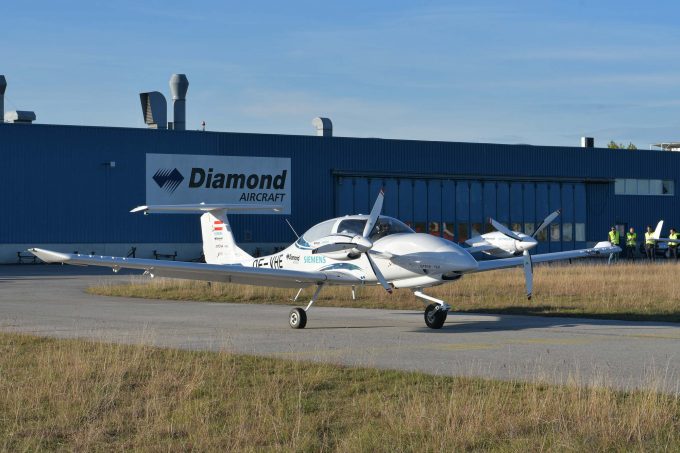
Two electric motors are mounted either side of the nose on a canard wing.
The diesel generator is located in the nose of the aircraft and can provide up to 110kW of power. Two batteries with 12kWh each are mounted in the rear passenger compartment, and act as an energy storage buffer. With a dedicated power lever, the pilot can control the energy flow between the generator, batteries and motor.
The pilot can select either pure electric mode (generator off), cruise mode (generator provides all power to the motor), and charge mode (generator charges the batteries).
Pure electric, the aircraft has an endurance of approximately 30 minutes. The hybrid system extends this to 5 hours.
“This is the first serial-hybrid electric plane in the world with two electrically powered free-stream propellers and one combustion engine,” said Dr Frank Anton, head of electric aircraft at Siemens.
“A distributed propulsion architecture opens entirely new possibilities for the design of highly efficient planes – and we have now proven its technical feasibility.”
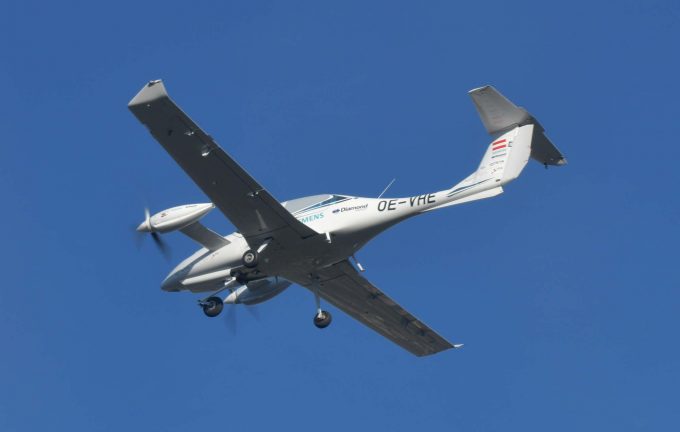
First flight for the multi-engine hybrid aircraft developed jointly by Diamond Aircraft and Siemens.
Siemens was responsible for the design and development of the electric powertrain. Diamond Aircraft was responsible for the reconfiguration of the aircraft and installation of the hybrid-electric powertrain.
During the 20-minute first flight, the aircraft demonstrated all modes of operation. This included pure hybrid, charging flight and full electric flight. In this last configuration, the aircraft was able to fly pure electric and produces zero emissions.
Further a full electric takeoff was demonstrated which can lead to a significantly lower noise footprint.
Ingmar Mayerbuch, Head of Flight Test at Diamond Aircraft, who piloted the aircraft said,”The first flight exceeded all our expectations. The combination of the hybrid powertrain and the configuration of the aircraft is just perfect. We reached 130 knots at medium power output and climbed to an altitude of 3,000 feet.”
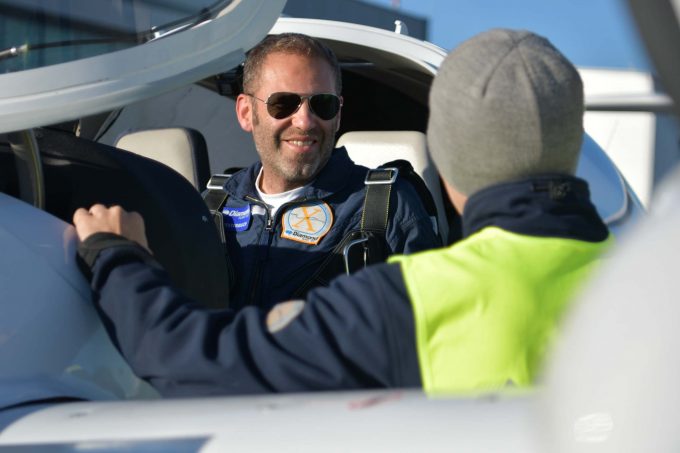
Ingmar Mayerbuch, Head of Flight Test at Diamond Aircraft, who flew the multi-engine hybrid aircraft.
The objective of future flight tests will be to determine the exact efficiency increase achieved in comparison to similar non-electric aircraft. Also the noise footprint will be determined. Further, future tests will gather knowledge on the practical operation of hybrid aircraft. Different hybrid modes of operation will be tested and its effect on efficiency, range, and energy consumption will be determined.
“Serial-hybrid electric propulsion systems and distributed propulsion architectures for us are the key to a more sustainable flight future also in higher power classes,” said Dr Anton.
“The Diamond flying testbed will help us to understand the requirements for these new propulsion technologies and to be prepared for the challenges of larger-scale applications.”
Diamond Aircraft
Siemens eAircraft


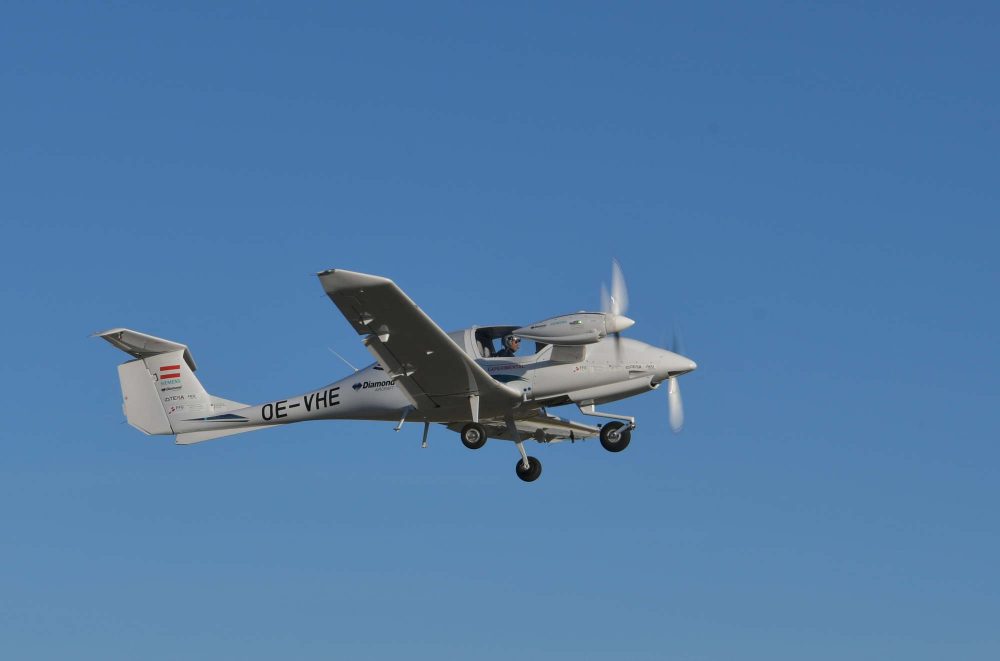














1 comment
Finally, it looks like we have some real progress!
Dual motor redundancy in case of failure during take-off which, in any event, is unlikely because electric motors are at least as, and probably more, reliable than turbines.
Close to twin diesel engine performance (DA42) with single diesel engine economy (DA40) if the gear is tucked away albeit there does not look like any place for the nose gear to go.
Battery power to extend glide by 30 minutes in case of diesel engine failure ie a range of up to about about 100 mm from land which would be good enough for most GA pilots.
It probably is a 2 seater, note frosted rear glass, with batteries occupying the rear seats but neither the DA40 nor the DA42 can take 3 or 4 people very far.
All we need now is light pressurisation, say 3 psi to permit flight at FL180, or 5.5 psi to permit flight at FL250, and it will be possible to cruise at 200 Kts and 5 US GPH of Jet A.